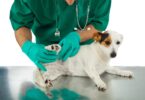It’s long been a source of contention among veterinary professionals when a dog should be spayed or neutered.
We understand, that a few years back, there was a huge overpopulation of stray dogs that necessitated a strong response from the animal care community.
After all, daily euthanasia of hundreds of dogs is not something any shelter should go through. This, however, ended up being the standard response instead of a limited time solution to a problem.
If you have a puppy and you aren’t sure when is the best time to fix your dog, consider some of the following information before you discuss it with your veterinarian.
Whatever you decide, know that’s it’s an expensive operation and based on the list below can be an expensive life as well. Which is why a pet care discount plan or a quality pet insurance with a wellness plan is always a good idea. It just makes sense as vet bills are getting pricey now a days.
Below, we listed 10 reasons why your pet would be healthier if left intact, as the pros and cons of neutering after puberty and the benefits of spaying after first heat, all outweighed in favor of waiting at least a year.
Contents
- 1 1. Hip Dysplasia
- 2 2. Heart Tumors
- 3 3. Abnormalities in Bone Growth & Development
- 4 4. Higher Risk of ACL Ruptures
- 5 5. Hypothyroidism
- 6 6. Infectious Diseases
- 7 7. Adverse Reactions to Vaccines
- 8 8. Secondary Anesthetic Procedures for Toy Breeds
- 9 9. Bone Cancer
- 10 10. Prostate Cancer
- 11 On Spaying & Neutering
- 12 Does Pet Insurance Cover Spaying and Neutering?
1. Hip Dysplasia
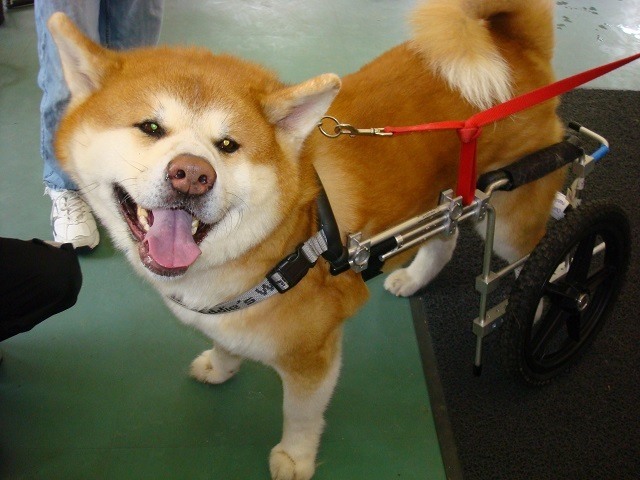
The wheel cart takes the pain and strain away from walking: source
The prestigious Cornell University College of Veterinary Medicine published a study in the Journal of the American Veterinary Medical Association that hypothesized dogs spayed at an early age were more likely to develop hip dysplasia.
This may be due to the premature removal of estrogen-producing organs in the body, leading to hip joints that develop abnormally because they’re missing estrogen.
It’s important to remember that hip dysplasia is mostly genetic, meaning it’s passed down from a puppy’s parents.
So if you’re purchasing a purebred dog like a labrador or a German shepherd, it’s critical to choose a puppy from parents who have been certified by the Orthopedic Foundation for Animals to ensure there isn’t a genetic history of hip dysplasia.
But the more you can reduce the chances of your dog getting hip dysplasia the better (this includes a proper food diet).
Which is why we switched our pup to real food instead of canned and dry food. So far home-cooked food have become our dog’s favorite meals. It’s worth a try. I know our dog’s health and energy made a 180 degree turn since going on a fresh homemade diet. We mix it with raw food to get his stomach use to it as raw is the ultimate goal.
2. Heart Tumors
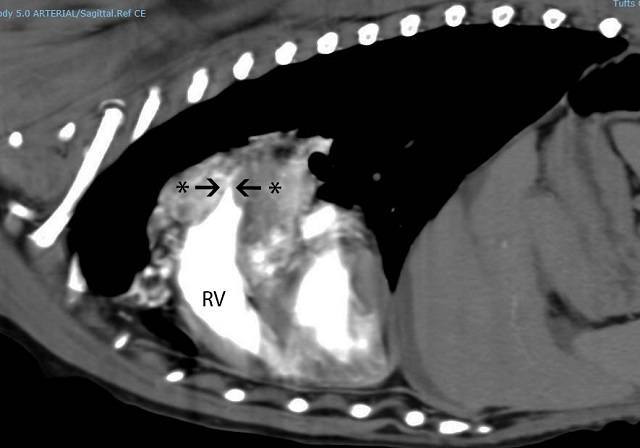
A heart base mass: source.
During an analysis of medical data that was recorded from 1982 to 1995, it was found that cardiac tumors were found more often in spayed females versus intact females. The most common type of cardiac tumor, hemangiosarcoma (HAS), was found five times more in spayed females, while neutered male dogs had a slightly higher risk than their intact counterparts.
The study came to the conclusion that 12 breeds had a higher than average risk of growing a heart tumor, while 17 other breeds had a lower risk.
The research hasn’t been in-depth enough to state how delaying a spay/neuter will decrease these risks, and there hasn’t been enough research done to see if there were any other common factors leading to these tumors.
Cardiac tumors are exceedingly rare in dogs, and you’re far more likely to see complications due to intact reproductive organs than you are a tumor of the heart.
3. Abnormalities in Bone Growth & Development
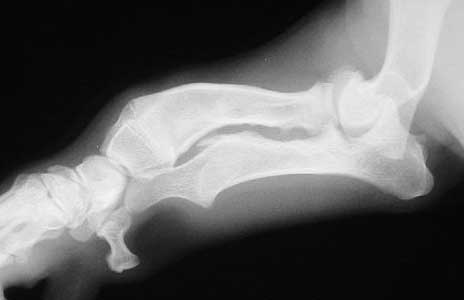
Osteochondrodysplasia: source.
Experienced breeders of large breed dogs and vets who take care of larger dogs have noticed that dogs fixed before their first birthday grew much larger than dogs who remained intact until after they reached puberty.
Multiple studies performed in the 1990s corroborated this, saying that the earlier a dog was fixed, the taller they’d wind up.
In 2000, a research study published in the Journal of Pediatric Endocrinology and Metabolism came up with a hypothesis as to why this happens.
When puberty approaches, estrogen is responsible for healthy maturation of the skeleton and the gradual closing of the epiphyseal growth plate, the spaces between the bones that allow the bones room to reach their full length.
It’s possible that removing estrogen (i.e. the ovaries or testicles) in puppies will keep the growth plates open longer than is natural. This allows more room for the bones to grow larger than they’re meant to, causing body proportions that can be unhealthy for the dog’s frame.
For example, the femur, the thickest bone in the hind legs, has a natural stopping point at eight months of age. But when the dog is fixed at the typical six months of age, the tibia, which should stop growing at about a year of age, will continue to grow, causing an unnatural angle at the knee.
This can put more stress on the cruciate ligaments, leading to an increased risk of a torn knee ligaments.
While some people might think this is good (large breed dogs should be big, right?), growing too quickly can lead to a slew of bone abnormalities that range from mild to deadly.
4. Higher Risk of ACL Ruptures
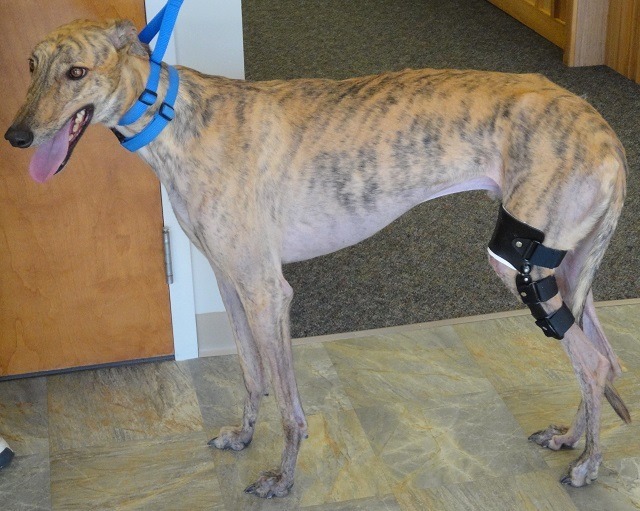
Knee brace after surgery: source
Anterior cruciate ligament (ACL) ruptures are a common ailment in active dogs and small dogs with bad knees. These ruptures require a costly orthopedic surgery and months of rehab, and when one knee goes out, it’s pretty likely that the other knee is likely to follow down the road.
While genetics play a big part (always pay careful attention to who you’re buying a purebred puppy from), it’s now being thought that early spays and neuters have a role.
A study at Texas Tech University Health Sciences Center showed that fixed dogs had a higher rate of ligament ruptures.
If you’re unsure what you should do for your large breed dog, find a veterinarian who’s experienced in your dog’s breed and consult with them.
5. Hypothyroidism

Golden retriever with hypothyroidism: source
Early spaying/neutering has been shown to increase the incidences of hypothryoidism in Golden retrievers.
Hypothyroid can lead to a host of health problems, including:
- Obesity
- Hair loss
- Dry skin
- High blood cholesterol
Dogs with hypothyroid need to have bloodwork drawn at regular intervals to monitor their thryoid levels and take a daily dose of medication.
6. Infectious Diseases
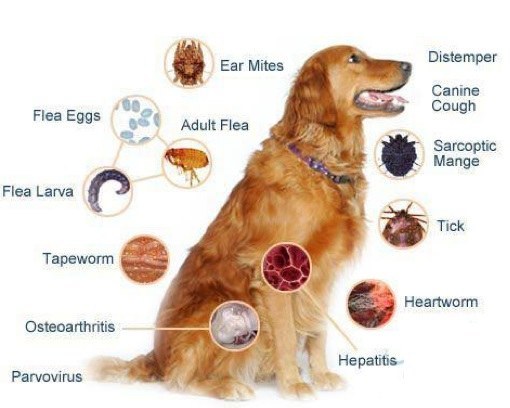
Help prevent these diseases in your dog.
Texas A&M’s College of Veterinary Medicine did a study of 269 shelter dogs to see how the rate of disease correlated with their spay or neuter surgery.
They divided the dogs into two groups and fixed one group before they hit 24 weeks, while the second half was fixed after 24 weeks of age. The owners were contacted to see if there was a change in behavior or if they developed any physical problems after the surgery.
No owners reported any behavioral changes, and all of the owners kept their adopted dogs.
However, the rate of infectious diseases was higher in the dogs that were fixed prior to 24 weeks.
7. Adverse Reactions to Vaccines
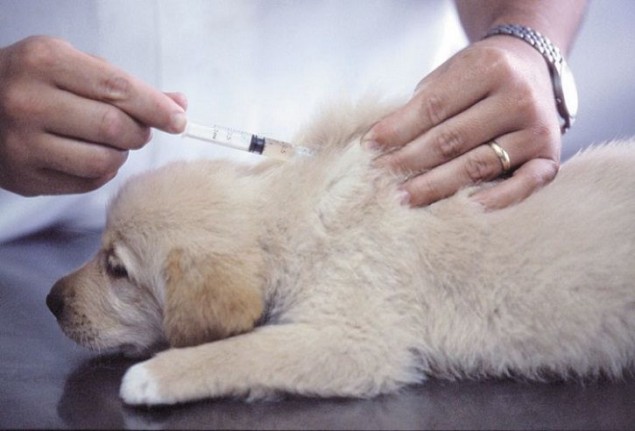
Keep vaccines effective, they are damaging enough.
There’s absolutely no reason not to vaccinate your dog for infectious diseases unless there’s an autoimmune disorder, but the American Kennel Club’s Canine Health Foundation released a report with the idea that early alteration might contribute to a higher incidence of adverse vaccine reactions.
There hasn’t currently been any official studies done on this theory, so regardless of your dog’s reproductive status, they need to be vaccinated on time to protect them from these deadly diseases.
If you’re worried about a vaccine reaction, understand that these are quite rare and are usually mild. If you can’t afford them, you can always let your vet know you will be buying your dogs meds online and have him give the shots.
8. Secondary Anesthetic Procedures for Toy Breeds

Do you really want to put this toy pup under anesthesia more than is required?
Toy breeds are notorious for retaining their deciduous (baby) teeth long past the normal six months. Their molars usually fall out on a normal timeline, but it’s not uncommon for them to retain their puppy canines or incisors long past six months or even past a year.
If you don’t want to put your dog under anesthesia more than necessary, you should definitely wait until after six months–preferably a year–to knock out two birds with one stone.
9. Bone Cancer
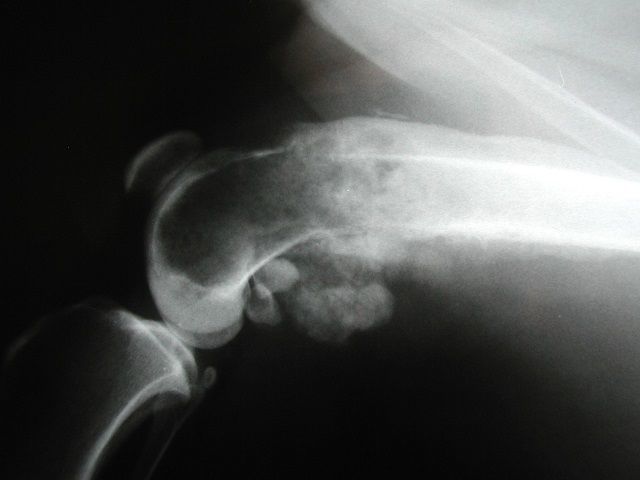
Bone cancer X-Ray in : source
In 2002, there was a study performed with Rottweilers where a link was established between the development of bone sarcomas and the age when they were fixed.
Dogs of both sexes that were fixed before they turned one year old were more likely to develop bone cancer later in life.
The fixed Rottweilers had the highest risk of bone cancer.
Data collected from the Veterinary Medical Database from 1980 to 1994 showed that the risk for bone cancer in large breed purebreeds doubled in dogs that were fixed.
If you have a large breed dog, you should absolutely discuss the risks of bone cancer with your vet before you take spaying or neutering completely off the table.
10. Prostate Cancer
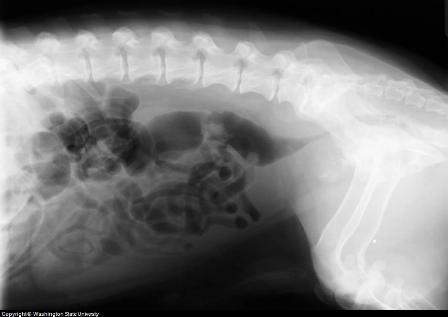
Prostate cancer x-ray.
It’s been long studied that neutering male dogs greatly reduces their chances of developing prostate problems, especially prostate cancer.
A study done by Michigan State University on 43 dogs showed there wasn’t any proof that neutering would prevent the dog from developing prostate cancer.
Researchers did say that prostate cancer may not be completely tied to the production of hormones released by the testicles as it was previously thought.
Because this is such a small study–tiny in the grand scheme of the medical field–it might not be the main reason you decide not to neuter your male dog until later, but it’s one more reason why its still the best course of action to wait a year before you neuter him.
On Spaying & Neutering

This handsome fella doesn’t want to go anywhere near a clinic: source
When to spay a dog & When to neuter a dog?
The debate is still mixed on when a dog should be altered. There’s no solid proof on either side saying pre-pubescent altering is better or worse than post-pubescent altering, so it should be decided on an individual basis what the best course of action for your dog is.
Many believe a female dog should be spayed before her first heat cycle, and a male dog should be neutered within 6 months after birth.
While others say that early spaying & neutering is too aggressive and spaying a dog after first heat is better as it will actually damage your pet’s health and shorten their lifespan if done too early. This is where we stand.
There is one critical point to consider: if you can’t keep your dog, especially a female, contained and away from other intact dogs, you should absolutely spay, and you shouldn’t even need to ask when to spay a dog. Same goes if you have to ask when to neuter a dog.
To be blunt, keep them away from other dogs or alter them as quickly as possible.
If you can’t, and that is really the case, then ask yourself, should even be a pet owner. A pet is a responsibility, not a toy or a gift that should be frivolously given during holidays.
Ultimately, the most important thing is that you do get your dog fixed before they inadvertently add to the extensive pet population.
There are also health risks associated with keeping your dog intact like mammary cancer, severe infections of the uterus, and enlarged prostates. Female dogs who get pregnant before they turn a year old can suffer their own unique health consequences.
Choosing to wait can be beneficial to your dog.
The most important thing in the end is that you’re a responsible dog owner who is doing what’s best for your dog and society: getting your dog spayed and neutered.
What they do agree on, however, is that dogs should always be spayed and neutered. With pet populations booming and the numbers of homeless animals being controlled through euthanasia, it’s critical that society collectively agrees that pets need to be fixed.
Does Pet Insurance Cover Spaying and Neutering?
The question of whether there is a pet insurance that covers spaying and neutering is not so clear of a yes or no answer. Many pet insurance companies do incentivize altering your pet via a discount on the monthly premium, but that doesn’t mean they will help pay for it.
That being said, a pet savings plan would be the better choice as any and all vet operations are instantly discounted.
If your plan is to alter your puppy down the road, then getting pet insurance early that comes with a wellness program is a great idea. Just add on the wellness plan, and then not only would you be able to offer the best quality care for your dog after the operation, but you will also save money doing so without compromise on care.
Another option is to open a savings account. If that means for the first year you stash aside some funds in it for veterinary care then so be it.
Otherwise, you can get insurance for now and when your puppy is ready to have them altered, let your provider know when its done so you can start getting that discount.
The 3 of the 5 insurance companies we normally recommend, do have a wellness package you can add to your policy to cover preventative care treatments, which include neutering and spaying for when you want to actually do it.
Petplan, Trupanion, and Healthy Paws do not cover neutering or spaying. But the following three do via the aforementioned wellness plan:
- Embrace – One of the largest most reputable pet insurance companies in this industry. You will be in good hands with them.
- PetPremium – This one is our choice pet insurance that covers neutering and spaying.
- Pets Best – Solid company which many of our friends use and have nothing but positive things to say.
If you don’t have the time to compare, then start with Embrace Insurance, that’s what we have and it was well worth getting as it took the financial stress ups and downs away.
When you get insurance, the added benefit is that instead of going to a low cost spay/neuter clinic, which for this kind of operation I would not consider, is the option to pick the best vet clinic for your dog’s alteration without compromise.




